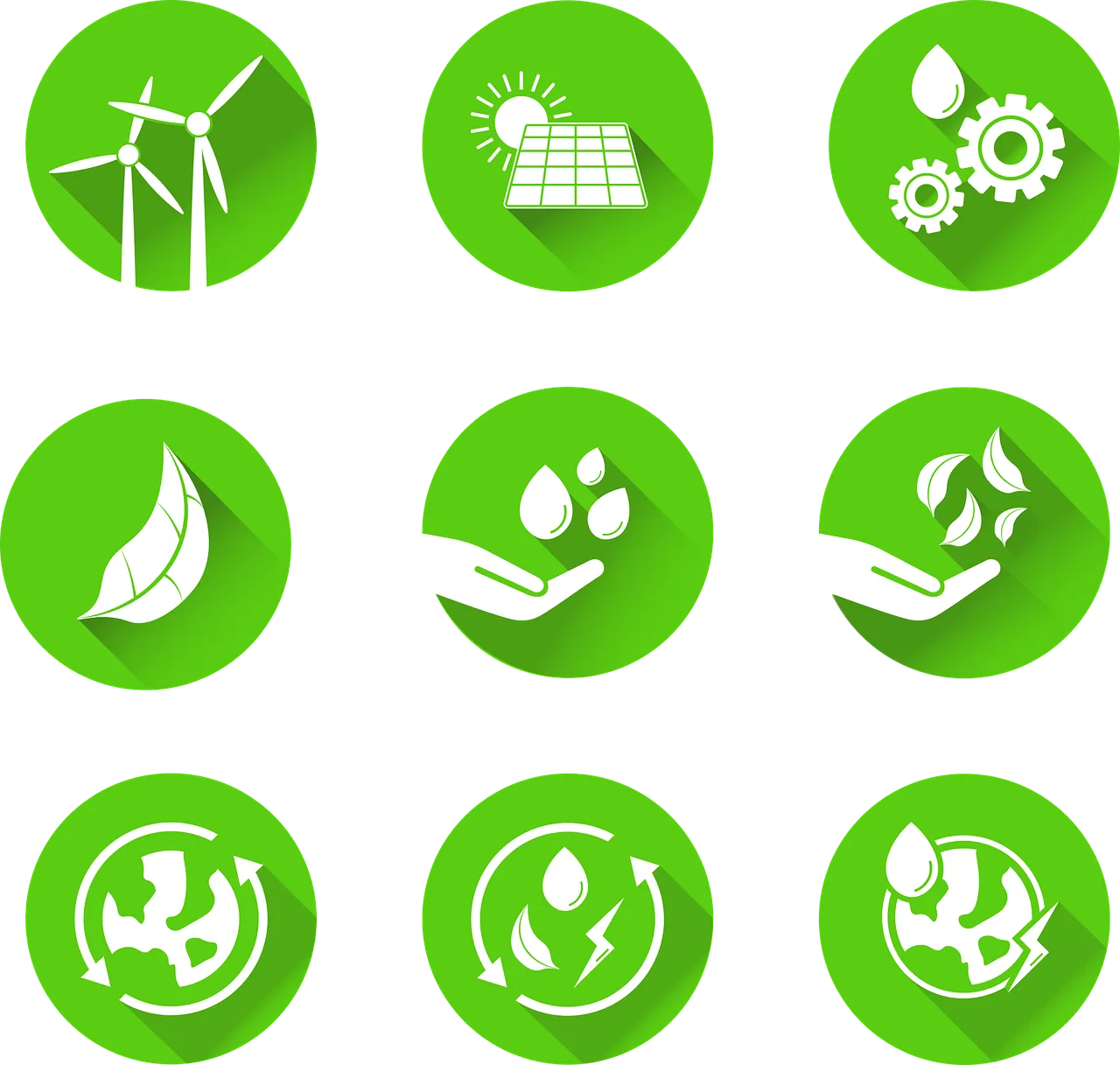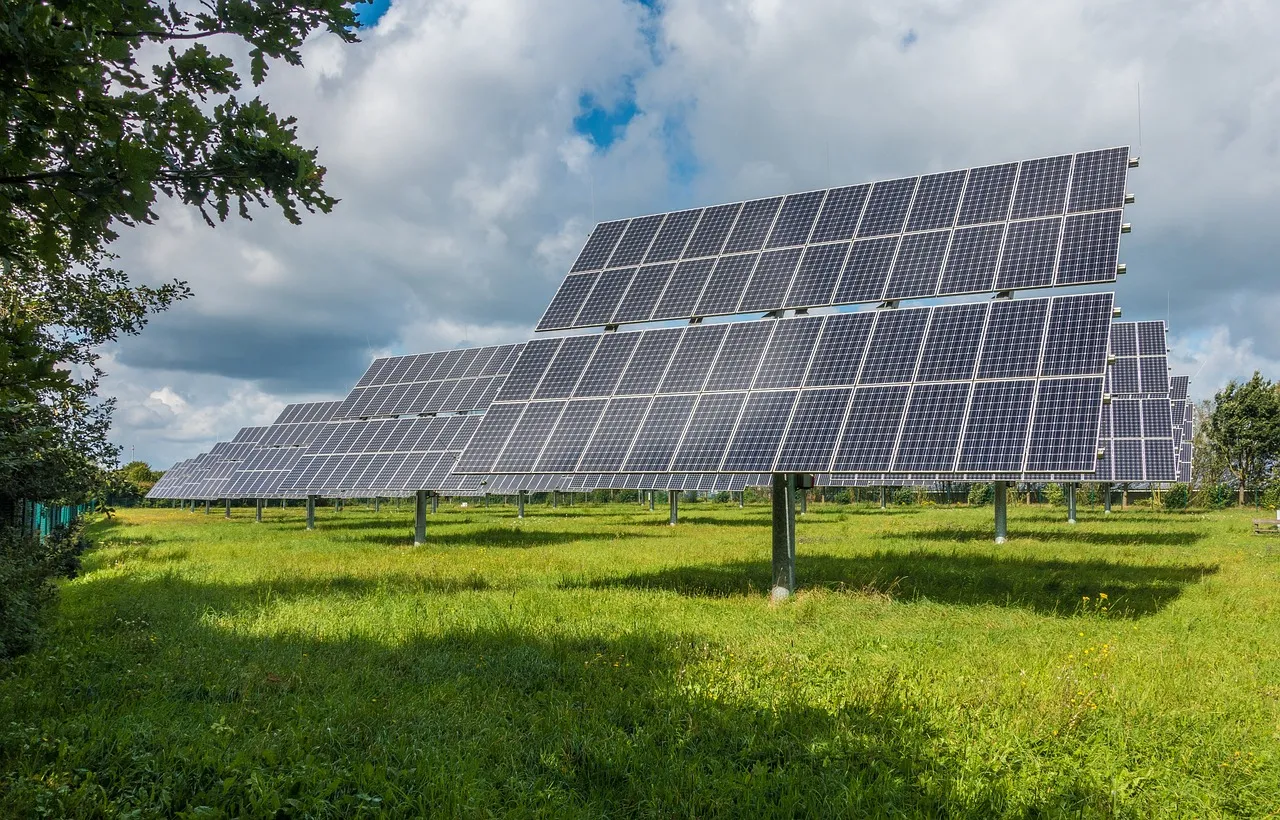In the rapidly advancing world of technology, the year 2024 is witnessing an unprecedented surge in eco-friendly innovations that are not only reshaping industries but also contributing to a sustainable future. This comprehensive guide explores the latest Green Tech Innovations that are set to sustain the environment in 2024 and beyond. From solar-powered gadgets to carbon-neutral initiatives, let’s delve into cutting-edge technologies that are not only environmentally conscious but also hold immense potential for high-earning opportunities.
Solar-Powered Revolution:
The Solar-Powered Revolution of 2024 stands as a pivotal moment in the ongoing quest for sustainable energy solutions. Advancements in photovoltaic technology have propelled this revolution, marking a significant shift towards more efficient and affordable solar panels. At the forefront of this transformative era are pioneering companies like Solar Tech Company, whose groundbreaking solar solutions are not only driving the adoption of clean energy but are also fundamentally changing the landscape of power generation.
The heart of this revolution lies in the continuous refinement of photovoltaic technology. In 2024, solar panels have become more efficient than ever, capturing a higher percentage of sunlight and converting it into usable electricity. This increased efficiency not only enhances the overall performance of solar systems but also contributes to a more cost-effective and accessible renewable energy source.

Solar Tech Company, as an industry leader, has played a crucial role in advancing solar technology. Their innovative solutions have not only elevated the efficiency of solar panels but have also made solar power more accessible for households and businesses alike. Through research and development initiatives, [Solar Tech Company] has contributed to the creation of sleek and high-performance solar panels that can be seamlessly integrated into various settings, from residential rooftops to large-scale commercial installations.
The economic benefits of investing in solar technology are substantial and multifaceted. As the cost of solar panels continues to decrease, businesses and homeowners are presented with a compelling opportunity to reduce their long-term energy costs. The return on investment for solar installations has become increasingly attractive, with reduced reliance on traditional energy sources translating into significant savings over time.
Governments worldwide have recognized the pivotal role of solar energy in achieving sustainability goals. In response, various nations have implemented incentives and subsidies to encourage the widespread adoption of solar technology. These incentives often come in the form of tax credits, grants, or favourable financing options, making solar installations an economically viable choice for both individuals and businesses.
As the solar-powered revolution gains momentum, it not only contributes to a cleaner environment but also fosters economic growth and energy independence. The transformative impact of advancements in photovoltaic technology, coupled with the efforts of forward-thinking companies like [Solar Tech Company], is paving the way for a future powered by sustainable and economically advantageous solar energy solutions. In 2024, the sun is not just a celestial body; it’s a source of innovation, economic prosperity, and a sustainable future for generations to come.
Sustainable Manufacturing Processes :
The year 2024 heralds a transformative era in the realm of manufacturing processes, signifying a paradigm shift as companies prioritise sustainability in their production methods. This evolution is driven by the urgent need to address environmental concerns and create a more sustainable future. As industries recognize the impact of their operations on the planet, innovative practices are coming to the forefront, reshaping the landscape of manufacturing.
One of the key pillars of sustainable manufacturing in 2024 is the integration of cutting-edge technologies such as 3D printing. This revolutionary approach allows for the creation of products with unprecedented precision and minimal waste. Unlike traditional subtractive manufacturing methods, 3D printing builds up products layer by layer, significantly reducing material usage and minimizing the environmental footprint of the manufacturing process. Companies embracing 3D printing are not only enhancing the efficiency of their production lines but also contributing to the reduction of overall waste in the industry.
Another significant contributor to sustainable manufacturing is the adoption of circular economy models. In a circular economy, the emphasis is on designing products with longevity in mind and ensuring that materials are reused and recycled at the end of their lifecycle. This approach contrasts with the traditional linear economy, where products are created, used, and then discarded. Companies committed to circular economy models are actively reducing the volume of waste generated, contributing to the conservation of resources and the mitigation of environmental impact.
Leading the charge in sustainable manufacturing is Eco-Manufacturing Company, an industry trailblazer that has successfully integrated green practices into its production processes. Case studies from Eco-Manufacturing Company serve as compelling examples of the economic advantages associated with embracing green manufacturing. By implementing sustainable practices, the company has not only reduced its environmental impact but has also achieved operational efficiencies, cost savings, and enhanced brand reputation.
The economic benefits of sustainable manufacturing extend beyond cost savings from reduced waste. Businesses that prioritize sustainability often find themselves in a favorable position in the market. Consumers, increasingly conscious of their environmental footprint, are more likely to support eco-friendly brands. Additionally, regulatory bodies and governments worldwide are providing incentives for companies that adopt sustainable practices, ranging from tax breaks to favorable financing options.
In essence, 2024 is witnessing a revolution in manufacturing, where sustainability is not just a buzzword but a driving force behind operational decisions. The adoption of innovative practices like 3D printing and circular economy models, exemplified by industry leaders such as [Eco-Manufacturing Company], is creating a win-win situation for businesses and the planet. As industries continue to embrace sustainable manufacturing processes, they not only contribute to environmental preservation but also position themselves for long-term success in a world that increasingly values sustainability and corporate responsibility.
Carbon-Neutral Initiatives:
In 2024, there is an unprecedented emphasis on achieving carbon neutrality as businesses acknowledge the critical importance of offsetting their carbon footprint. This commitment reflects a growing awareness of the environmental impact of industrial activities and a recognition of the need for responsible corporate citizenship. Companies, such as Carbon-Neutral Pioneer, are at the forefront of this movement, implementing diverse strategies to attain carbon neutrality and setting a precedent for others to follow.
Carbon-Neutral Pioneer exemplifies a commitment to environmental stewardship by employing a multifaceted approach to achieve carbon neutrality. One of the key strategies involves investing in reforestation projects. Forests act as natural carbon sinks, absorbing atmospheric carbon dioxide and helping mitigate the effects of climate change. By supporting reforestation initiatives, Carbon-Neutral Pioneer not only contributes to the restoration of ecosystems but also actively engages in offsetting the carbon emissions generated by its operations.
Another pivotal aspect of Carbon-Neutral Pioneer’s carbon-neutral initiatives is the strategic investment in renewable energy sources. By transitioning to clean and sustainable energy alternatives, the company reduces its reliance on fossil fuels, thereby decreasing its carbon emissions. This shift not only aligns with global efforts to combat climate change but also positions the company as a leader in the transition towards a low-carbon economy.
The economic incentives for businesses to adopt carbon-neutral initiatives are significant and extend beyond the altruistic benefits for the environment. Governments and regulatory bodies are increasingly offering incentives such as tax credits, grants, and subsidies to companies that actively work towards carbon neutrality. These financial incentives not only help offset the costs associated with implementing sustainable practices but also contribute to the overall economic viability of adopting green initiatives.
Furthermore, the decision to go carbon-neutral has a profound impact on brand reputation and consumer loyalty. In an era where consumers are increasingly eco-conscious, aligning with environmentally responsible brands has become a priority. Carbon-Neutral Pioneer and other companies that embrace carbon-neutral initiatives gain a competitive edge by demonstrating a commitment to sustainability. This positive association with environmental responsibility not only attracts environmentally conscious consumers but also fosters brand loyalty among existing customers.
Smart Grid Technologies:
In the dynamic landscape of energy management, smart grid technologies have emerged as pivotal tools for optimizing energy distribution and consumption. In 2024, these technologies are playing a crucial role in reshaping the traditional energy infrastructure, introducing efficiency, sustainability, and cost-effectiveness to the forefront.
Smart grid infrastructure represents a sophisticated network of digital communication technologies, sensors, and advanced analytics designed to enhance the efficiency and reliability of electricity distribution. These technologies enable real-time monitoring and control of energy flows, allowing utility companies to respond promptly to fluctuations in demand and supply. As a result, smart grids contribute to a more resilient and adaptive energy distribution system.

Advancements in smart grid technologies have brought about a paradigm shift in energy management. By incorporating sensors and communication devices throughout the grid, utilities gain unprecedented visibility into the performance of their networks. This level of granularity facilitates efficient load balancing, reducing energy wastage and ensuring that electricity is distributed precisely where and when it is needed. The ability to detect and address issues in real-time enhances the overall reliability of the energy supply, minimizing disruptions and improving the quality of service for consumers.
One of the key advantages of smart grid technologies is their role in promoting energy conservation. Through the implementation of demand-response programs, consumers can actively participate in managing their energy consumption based on real-time pricing and incentives. Smart grids empower consumers with the information and tools needed to make informed decisions about their energy usage, fostering a culture of energy efficiency and environmental responsibility.
Numerous case studies showcase successful collaborations between tech giants and utility companies in implementing smart grid technologies. These collaborations often involve the integration of advanced analytics, machine learning, and artificial intelligence into the grid infrastructure. Tech giants provide the expertise and technological solutions needed to enhance grid resilience, optimize energy distribution, and improve overall operational efficiency.
The economic benefits of smart grid technologies are profound. Reduced energy wastage and improved efficiency lead to cost savings for both utility companies and consumers. Tech giants investing in smart grid projects not only contribute to a more sustainable energy landscape but also position themselves as key players in the transition to a smart and interconnected energy future.
Circular Economy Models:
In 2024, the concept of a circular economy has gained significant traction as businesses across various industries increasingly prioritize sustainable practices. This transformative approach centers around the idea of minimizing waste and maximizing the longevity of resources through the continual reuse and recycling of materials. Among the trailblazers leading this movement is Circular Economy Innovator, a company that exemplifies the adoption of circular economy models to create a sustainable, closed-loop system.
At its core, a circular economy challenges the traditional linear model of “take, make, dispose” by emphasizing the importance of designing products with durability and recyclability in mind. [Circular Economy Innovator], as a pioneer in this field, is actively reshaping its production processes to minimize waste and embrace a more sustainable approach. This involves not only rethinking product design but also reimagining entire supply chain systems to create a circular and regenerative loop.
One key aspect of circular economy models involves the promotion of recycling and reusing materials. Circular Economy Innovator strategically incorporates recycled materials into its manufacturing processes, thereby reducing dependence on virgin resources and minimizing the environmental impact of extraction and production. By doing so, the company actively contributes to the reduction of waste in landfills and the conservation of valuable natural resources.
The closed-loop system implemented by Circular Economy Innovator ensures that products and materials are recycled at the end of their lifecycle, creating a continuous and sustainable cycle. This approach not only benefits the environment by minimizing the environmental footprint but also presents economic advantages for the company. Through the efficient use of resources, Circular Economy Innovator lowers production costs, reduces waste disposal expenses, and gains a competitive edge in a market increasingly shaped by environmentally conscious consumers.
Moreover, circular economy practices unlock new economic opportunities for businesses. Companies embracing this model often find innovative ways to repurpose waste materials, turning them into valuable resources. This not only contributes to environmental conservation but also presents a potential revenue stream. By adopting a circular economy approach, businesses position themselves to capitalize on the growing demand for sustainable products and services, thereby securing high-earning returns in the long run.
The economic viability of circular economy models is further supported by changing consumer preferences. As environmental awareness continues to rise, consumers are actively seeking products and services from companies committed to sustainability. Circular Economy Innovator, by aligning itself with circular economy principles, not only enhances its brand image but also establishes a loyal customer base that values eco-friendly and socially responsible practices.
Conclusion:
In summary, the Green Tech Innovations in 2024 not only play a pivotal role in fostering a sustainable future but also present lucrative opportunities for businesses and investors. With a global emphasis on environmental consciousness, integrating these green technologies into your business model can position you as a leader in both innovation and profitability. Stay informed, embrace sustainability, and unlock the potential for a future that is both environmentally conscious and financially rewarding.
#TechRevolution #EcoFriendlyFuture #EnvironmentalInnovation #GreenTechTrends #SustainabilityNow #SustainableInnovations
